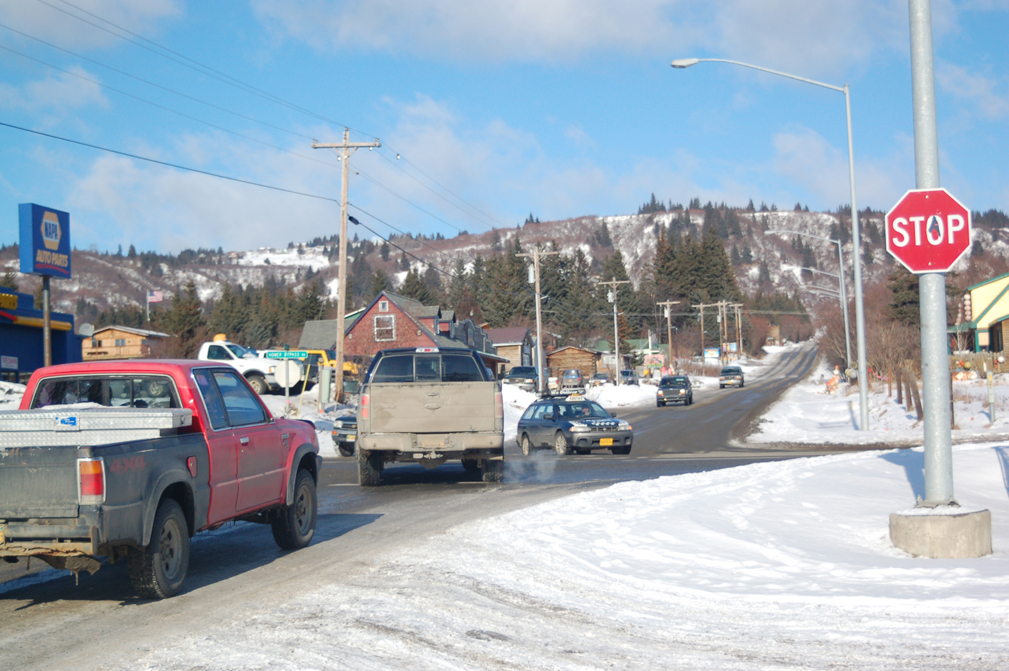The busy intersection of the Sterling Highway and Main Street will get a traffic signal with turn lanes. That option was one of three being considered by the Alaska Department of Transportation and Public Facilities to control traffic on Main Street, the street connecting downtown to Old Town that crosses the highway. Other options included a roundabout and a traffic signal with no turn lanes.
In a letter to city manager Walt Wrede sent April 10, Carla Smith of DOT&PF design and engineering services announced the decision. In making its decision, DOT&PF considered issues like right-of-way impact, cost and project schedule, Smith wrote. The roundabout had the greatest right-of-way impact. The signal with traffic lanes will provide better traffic operations. Constructing turn lanes as part of the signal installation would be cheaper than adding them in the future, Smith wrote.
In its consent agenda, the Homer City Council on Monday night passed a resolution expressing support for the traffic signal with turning lanes.
A workshop on the alternatives was held March 18 by DOT&PF officials, representatives from Brooks & Associates, a public relations firm, and USKH, an Anchorage design firm. The estimated cost of the options ranged from $4.1 million for the roundabout and $1.5 million for the traffic signal without lanes. The middle option and the one chosen has an estimate of $1.9 million. Designers also looked at other factors such as the crash benefit — how much money is saved in preventing injuries and property damage — maintenance and operation costs, and a delay benefit, or how much time is saved. A roundabout has a higher crash benefit and a lower maintenance and operation cost while the signals have a higher delay benefit.
Most people commenting at the workshop or submitting written comments favored a traffic signal, Smith said after the workshop. Several truck drivers said it would be hard to get into the roundabout because of traffic coming from other directions that does not allow for gaps. Others said using roundabouts made them nervous. Smith said DOT&PF looked at the long term in making its decisions.
“We want to look at something that’s going to be good for the next 20 years of design life,” she said. “We don’t want to have to revisit the intersection. We’re trying to make the most of the public’s money.”
In her letter to Wrede, Smith did express a caution: that future budget restraints could restrict installing more signals. Outside of Anchorage, DOT&PF will budget for maintenance of traffic signals.
“As budgets are constrained and more signals are desired in the future, it will be valuable for our agencies to discuss long term funding of maintenance for signals before more are constructed,” Smith wrote.
Now that the preferred alternative has been announced, the next step in building the signal is to prepare an environmental document and send it to the federal government for review and approval. That should happen by this fall. The department will then do final design work and start with right-of-way negotiations and acquisitions, about an 18-month process. Construction could start in 2016 or 2017.
Michael Armstrong can be reached at michael.armstrong@homernews.com.


